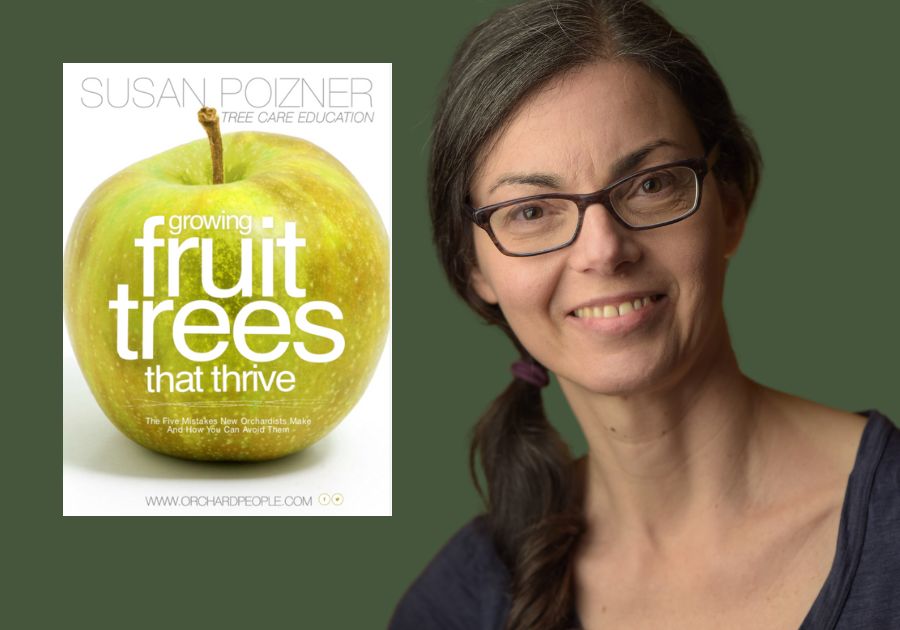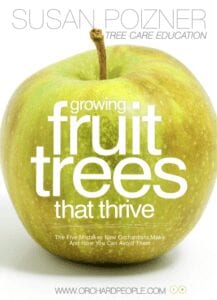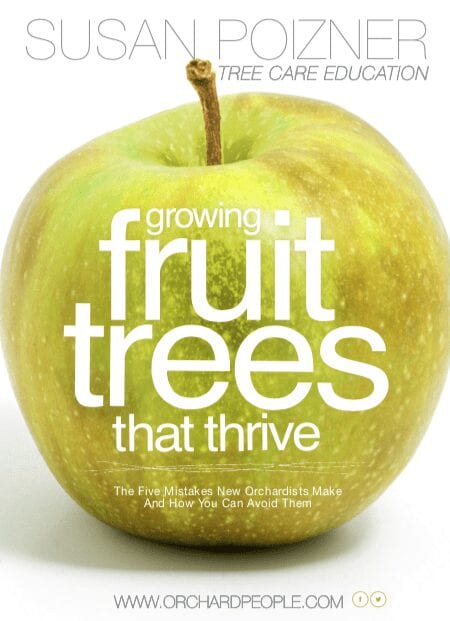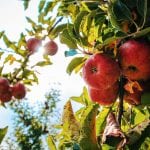Many types of fruit trees won't survive in a very cold climate. But winter hardy apple trees can thrive in Read more


FRUIT TREE CARE NEWSLETTER
A Superfood in your Garden: How to Grow Seabuckthorn Plants

Seabuckthorn berries are considered a nutrient-rich superfood...and these plans are also easy to grow even in poor quality soil.
In episode 10 of the Urban Forestry Radio Show, Bill Schroeder of Agriculture and Agri-Food Canada’s Swift Current Research and Development Centre in Indian Head, Saskatchewan has developed new easier-to-grow seabuckthorn varieties and in this interview he talks about the plant's history and how to grow seabuckthorn for berries.
The interview below is slightly edited for clarity. To listen to the entire episode, click on the player below.
why are seabuckthorn berries considered a superfood?
Bill Schroeder: Well, I think there's couple of reasons why they're considered to be that. They are about the most nutritious and the vitamin rich of all berries that you can find pretty much throughout the world. Seabuckthorn berries are high in antioxidants, particularly vitamin C, tocopherols, carotenes and flavonoids, but in addition to that they package all of these different phytochemicals into one small fruit package. So, not only does the seabuckthorn provide many health promoting, nutritious values through its berries, but also its seed has some very useful, essential fatty acids that can be used for skin care. So, it's a very powerful berry product that contains a lot of very useful phytochemicals.

what is the history of seabuckthorn plants in north america?
Bill Schroeder: I'm a plant collector and have been on many expeditions mainly to very Northern climates of Siberia and Northern China. And in 1985, I was on a seed collection mission looking for different types of tree and shrub species for use in shelter belts. And as we were traveling throughout the Siberian countryside, I noticed these huge eight areas in acres of orange berried shrubs. So, I finally had to get them to stop the Jeep and we got out and we had a look at these plants, and I had instantly recognized them as seabuckthorn, which was a plant we've been growing in the Canadian prairies probably since the 1950s for shelter belts and other revegetation type projects. So, we had never thought them as a fruit producing shrub, we thought them more a shrub that could be used to stabilize soil.
But what I found when I was in Siberia was that the Russian government was planting extensive acreages of this plant to supply fruit concentrate for use in their space program. So, what was happening is the cosmonauts were taking seabuckthorn extract into space with them, both as an ointment to put on their skin to prevent radiation or UV radiation burn, but also as a food supplement because of its high nutritious content.
So, that got me very interested. Well, this is a shrub that we grow very well in Canada. And it's got these very unique characteristics that we really hadn't hadn't thought of before. And I can relate sort of the rise of seabuckthorn after that visit sort of like a talented performer or artist that's sort of worked in obscurity for many years but finally is going to become an overnight success, and so, I thought, "Well, that might just happen with seabuckthorn if it's brought to the North American market."
how did bill start breeding seabuckthorn plants in canada?
Bill Schroeder: Well, to begin with, my first trip I just brought back memories and what I had seen. My next trip, which was two years later to the same area, I had made arrangements to actually specifically meet with some of the seabuckthorn breeders in Russia and made arrangements with them to provide me with some germ plasm in the form of seed, that I would bring back to Canada. And that was the start of what began as a 25 year long breeding program.

why was it necessary to develop new seabuckthorn plant varieties?
Bill Schroeder: Well, I think there's a couple things there. One is that seabuckthorn is dioecious. So, the male and female plants are separate, of course. And if you're planting just seeds, as we were doing in shelter belts for all those years, you get about a 50:50 ratio of male and female plants. So, planting seedlings for fruit production isn't the most efficient use of the area.
Now, the other thing with the Russian cultivars is that they were very well adapted to that area of Siberia. And some of the varieties that I did bring back with me to test in the prairies did fairly well, but I really thought that we needed to have a Canadian developed and fully adapted seabuckthorn varieties that Saskatchewan and Alberta and Manitoba, and for that matter, Canadian growers could say, "This plat was developed for our use, it's specific for needs," and they could use that as an opportunity to mark a Canadian bred and developed seabuckthorn plant.
what are the qualities of north american seabuckthorn plant varieties?
Bill Schroeder: Breeding for a larger berry is not that difficult. It's just a matter of selecting individuals with large berries. And so, it's a fairly easy task. So, we very quickly got some very large fruited plants.
Now, as the name seabuckthorn tells you, it can be a very thorny plant. So, this was the area that I really focused my breeding program on, was trying to develop a large fruited thornless variety, and to do that I needed to conduct many different crosses using many different parental lines to try to bring forward some of the genes that would develop a thornless plant. And what I found is that the gene for thornlessness really came from the male plant. So, when I identified thornless male plants, I could very regularly transfer that thornless gene into the female plant using the gene that's coming from the male.
As the name seabuckthorn tells you, it can be a very thorny plant. So, this was the area that I really focused my breeding program on, was trying to develop a large fruited thornless variety
Bill Schroeder of Agriculture and Agri-Food Canada’s Swift Current Research and Development Centre in Indian Head, Saskatchewan
how many different seabuckthorn plant varieties did bill develop over 25 years?
Bill Schroeder: Well, when I think of varieties that I released, I ended up releasing four varieties, but to get to that four varieties we screened over 25,000 individual genotypes. And from there we went to about 120 promising individual cultivars. And from those 120 promising cultivars we ended up with four cultivars that were officially released and are available to growers.
The first one that we released was called Harvest Moon, the second was Orange September, and the third was Autumn Glow, and the last one is Prairie Sunset.
Well, all the seabuckthorn varieties I developed have very large fruit. They all are quite sweet. So, we measure sweetness in Brix. So, the Brix value would be greater than 10 for all four varieties. What really separates them, I think, is mainly when they mature, when the fruit is ripe. Harvest Moon matures fairly early, Orange September is fairly late, and Prairie Sunset and Autumn Glow are somewhat in between. And when I say mature, the difference in maturity might be up to three to four weeks.
So, if Harvest Moon is maturing in mid-August, which it does in Saskatchewan, Orange September would be maturing in probably the first week of September. So, there's quite a range of time between how long it takes for the fruit to reach the point where you want to harvest it.
I'm a big supporter of diversity in an orchard and having sort of cultivars that are certainly not identical but will give you these opportunities to extend your harvest season. And also I find that by doing that you have a better handle on any management of any diseases and insect pest set that may occur, although I must say that seabuckthorn has very... We've found very few insect and disease problems in Canada compared to what I've seen in Europe and in Russia.

were the newly developed seabuckthorn plant varieties an overnight success?
Bill Schroeder: Not really. I mean, one could have hoped that we could get the plant material into the hands of growers very quickly, but that didn't happen. It's a small niche market. I found that a lot of the nurseries weren't familiar with the plant, there wasn't much ornamental value to it, so there wasn't a lot of interest in propagating on large scale.
The other thing that the growers, when they're planting fruit varieties they don't want to spend the same amount of money as you would for ornamental plants. So, it was really difficult to convince propagators that they should be growing seabuckthorn instead of the chicken and egg thing. Growers wanted it, but at the time the markets were a little bit soft, they didn't know where they were going to sell them. So, the nursery men, well, they didn't really feel there was a strong enough market to really put a lot of effort into it.
The nice thing about seabuckthorn, it's very easy to propagate. So, it grows very well from hardwood cuttings as well as softwood cuttings. So, it's not a difficult plant to propagate.
So, once nurseries became aware of that, they seemed to take lead, and at that this time I think that there are nurseries that are actually producing some of these cultivars.
At the same time, however, there is a lot of seabuckthorn material that's coming in from Europe and Russia. Not that that's a bad thing, although I am somewhat concerned of the transmission of particular disease and insect pests that may affect the long-term viability of the industry in Canada. As I said before, we've been fortunate that we've been able to stay relatively disease and insect free with seabuckthorn, but it's always a concern when you're bringing material in from overseas that you may inadvertently introduce some new pest.

what does the seabuckthorn plant look like?
Bill Schroeder: Okay, well, if you were to come across a garden that has a silver leaved umbrella shaped plant that has in September and August and well into winter a lot of very bright orange berries, it's probably a seabuckthorn.
how to grow seabuckthorn in a small garden
Bill Schroeder: Seabuckthorn has a habit of spreading by underground root systems. So, if you plant one plant, in several years you'll have several plants, and in 10 years you'll probably have 15 to 20 plants, because in its natural environment it's a colonizer so it's a pioneer plant that will grow on a poorly fertile site and will continue to spread to its underground root system.
So, I wouldn't necessarily think it would be a good choice for a small backyard, but if you're willing to diligently control the shoots that's going to come from the root system, it can be a very productive plant and provide you with probably all the seabuckthorn food you're going to need.
how would you control the spread of seabuckthorn plants?
Bill Schroeder: Very simply by mowing it. So, plant grass around it, and this is what we do in our orchards is that we plant grass between the rows and we just continually mow the grass at the same time that we're mowing the root shoots that are emerging from the soil alongside the orchard row.
it can be aggressive, but it's not something you cannot control. And so, if you just keep on top of it, you can keep them in place.
what type of climate zone can you grow seabuckthorn plants in?
Bill Schroeder: Well, the species itself, the genus and species is very diverse. And it grows in fairly humid, seashore environments to very dry, continental environments. The varieties that we developed are more suited to cold, dry environments, much like you'd find throughout much of Canada. For more maritime climates, say on the East Coast or the West Coast, our varieties may be more susceptible to diseases such as fusarium wilt.
what fertilizers are necessary when you grow seabuckthorn plants?
Bill Schroeder: Well, actually seabuckthorn doesn't require a lot of care from a fertility perspective. And the reason for that is that it has the ability to fix its own nitrogen. So, it's its own fertilizer plant. It produces enough fertilizer or enough nitrogen to satisfy most of its nutrient demands.
The only time you may have to add a fertilizer is if you noticed a phosphorus or a potassium deficiency, and you would notice that by a sort of purple foliage and a general poor condition of the plant. But, frankly, I have never seen that happen. So, fertilization isn't needed at all.
Pruning can be very effective in maintaining the high fruit yielding capacity of the plant...We're basically following the open-center pruning system that you would use on an apple tree.
Bill Schroeder of Agriculture and Agri-Food Canada’s Swift Current Research and Development Centre in Indian Head, Saskatchewan
how do you prune a seabuckthorn plant?
Bill Schroeder: Pruning can be very effective in maintaining the high fruit yielding capacity of the plant. If you leave the plant to grow on its own, it's going to gradually develop this umbrella shaped canopy with all the fruits sort of on the periphery. And that's because it doesn't like shade. So, all the interior branches, if they're shaded out, will not produce fruit.
So, what I like to do is I like to have a pruning regime where you have what I call an open-center system. So, you would have your main stem and then perhaps three or four scaffold stems coming off that main stem, and that's where the majority of your fruit will be produced.
You are shaping it into a tree form. You can control any side shoots or ground shoots that are developing, keep them pruned away so that you end up with a single stem. We're basically following the open-center pruning system that you would use on an apple tree.
how can you tell if a seabuckthorn plant is male or female if there is no flowers or fruit on the tree?
Bill Schroeder: The simple answer is no. You need to identify the flowers or the fruit. On the other hand, if you are able to look at the buds, say in the winter time, the male buds will be quite large, these are the floral buds. The male floral buds will be quite large. The female floral buds are much smaller and finer in appearance.
Now, seabuckthorn doesn't express its floral flowers until about age three or four after planting. So, if you've just planted the shrub you probably aren't going to know its sex for several years. And if it was planted from a seed there's a 50:50 chance it'll be male or female.

do you need more than one plant to ensure that your seabuckthorn plant actually produces fruit?
Bill Schroeder: That's right. Yes, it is dioecious so you will need a male plant to have fruit.
do seabuckthorn plants produce fruit in the shade?
Bill Schroeder: I won't say they won't fruit this in the shade because they will, they'll produce berries when they're in shade, but they just don't grow very well. And you're not going to get very many flower buds developing. You'll get some, the tree will become very lanky and it will be searching for light, and if it's really a shade environment it's just not going to do very well and you're really not going to be happy with it.
what type of conditions do seabuckthorn plants thrive in when they grow in the wild?
Bill Schroeder: In its natural environment seabuckthorn will be growing on the periphery of a forest or, for example, along the Baltic Sea in Finland and Sweden, you'll find it growing on rocky outcroppings that are right on the edge of the sea. In Siberia, it's growing along the edges of streams and always in open areas, you'll never find it in a forest environment.
Now, it's very similar and maybe some of your listeners are familiar with the silver buffaloberry, it's a native shrub to Western Canada and centrally the Great Plains of the United States, and it's a close relative to seabuckthorn, and you'll find it's growing out in open spaces and that's the same with seabuckthorn. So, if you're trying to mimic its natural environment, you aren't going to plant it, I'm going to say, in a orchard where you're mixing it with taller growing plants.
how does seabuckthorn fix nitrogen?
Seabuckthorn is a nodulating species or genus and it produces nitrogen through an association with Frankia. So, it's not a mycorrhiza association, but it is an association with Frankia that through their nodules helps them to fix atmospheric nitrogen.

what are some of the health benefits of seabuckthorn berries?
Bill Schroeder: It can be used for a number of skin elements. And I know several companies in North America that are marketing both the fruit oil and the seed oil for topical applications related to different skin issues including dermatitis.
will bill continue to study and breed seabuckthorn plants?
Bill Schroeder: I am retiring in August of this year, but my passion for plants like seabuckthorn will continue. And I have my own little grove of seabuckthorn where I'll continue my breeding work. I'll continue to work with people that are interested in this fascinating plant, answering questions, providing information, just wherever I can help I'll continue to do that.
more about the urban forestry radio show and podcast
The show’s host is Susan Poizner, creator of the award-winning fruit tree care training website www.orchardpeople.com and award winning author of three books on fruit tree care.
Listen to the podcast by clicking below. And sign up for our iTunes feed so you don’t miss an episode!

Susan Poizner
Learn more about Susan on the about us page.





